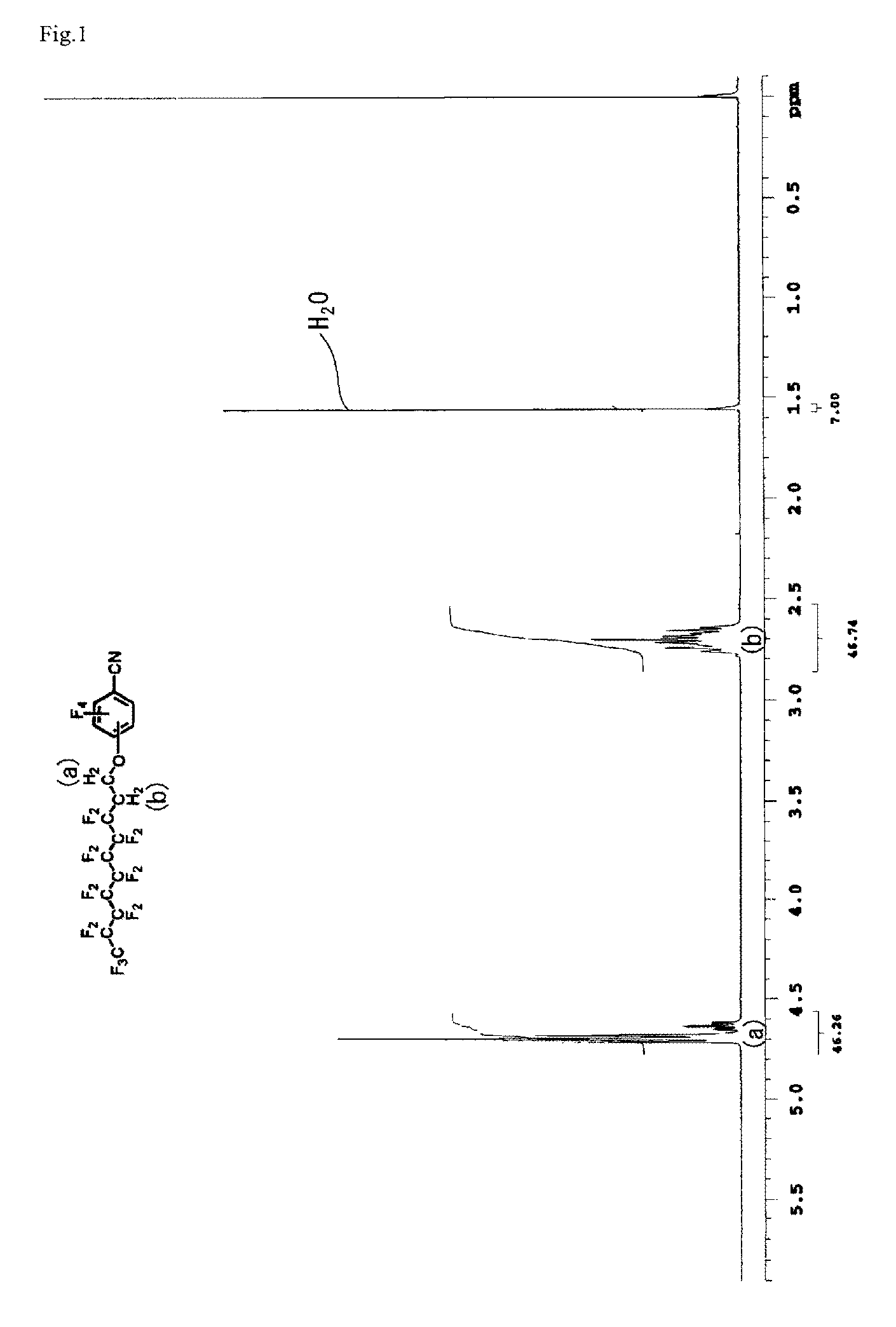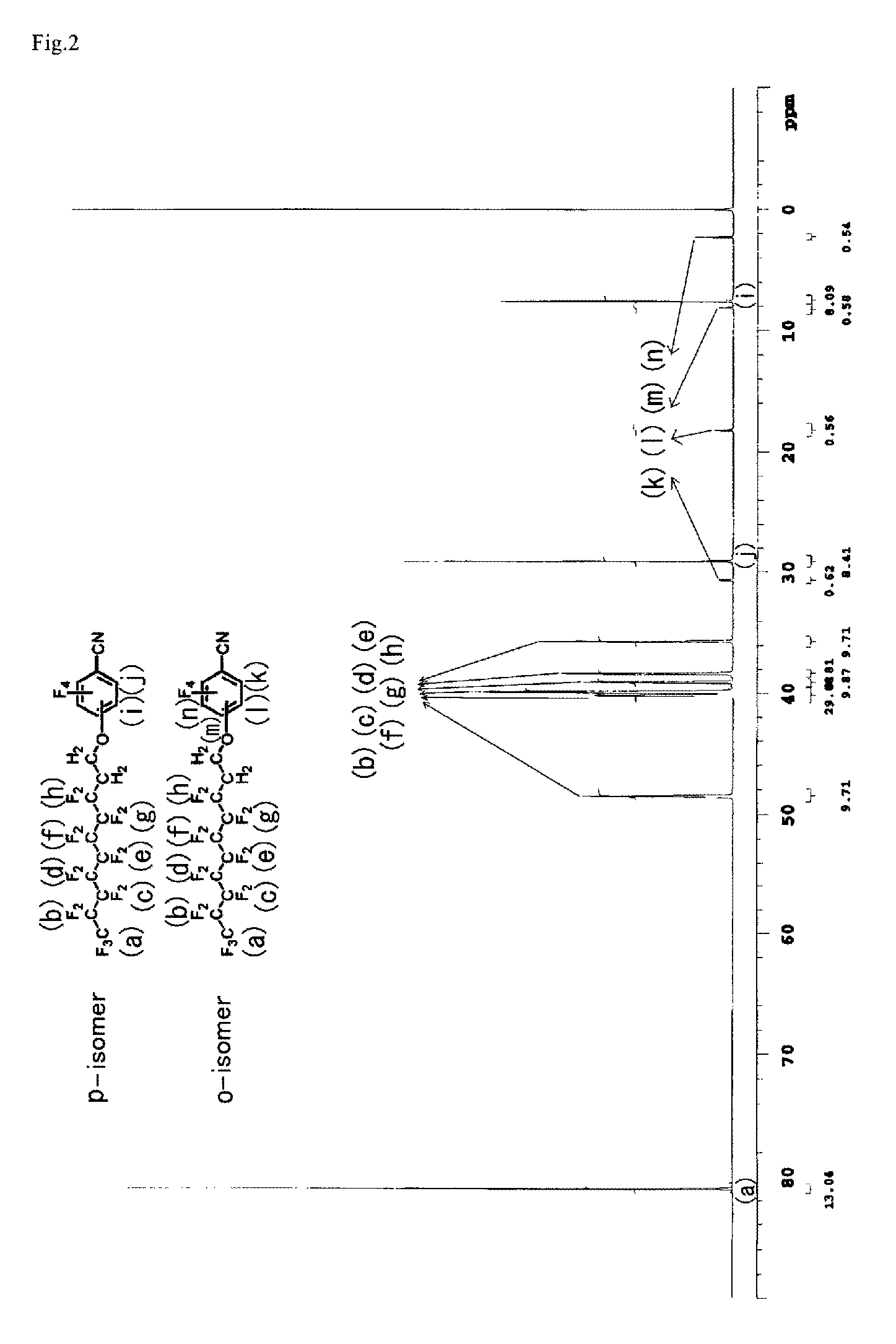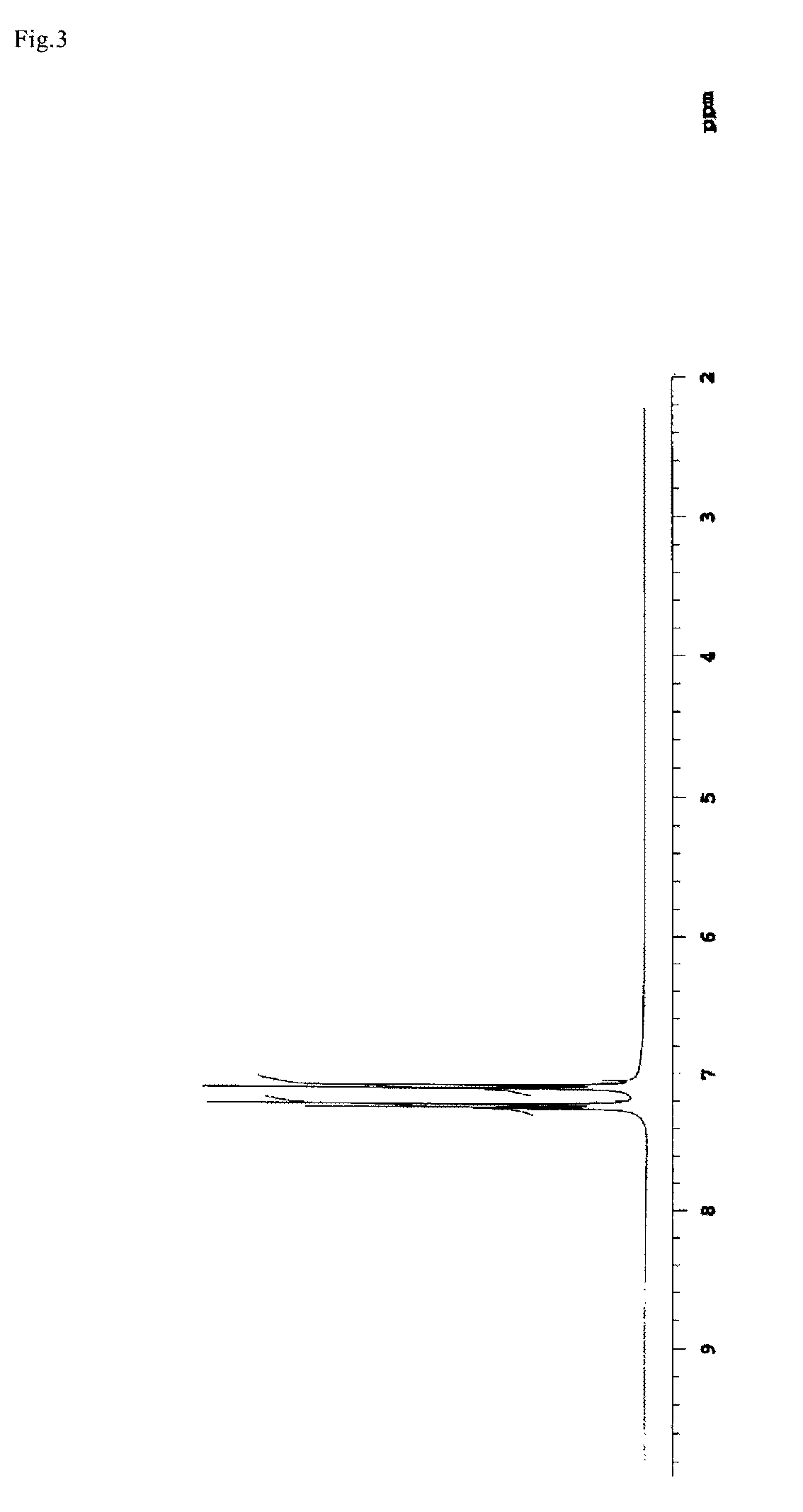Fluorine-containing compound
a technology of fluorine and compound, applied in the field of fluorine-containing compound, can solve the problems of increasing transmission loss, and achieve the effects of high water repellency, low water absorption ratio, and superior heat resistance and low moisture(water) absorption properties
- Summary
- Abstract
- Description
- Claims
- Application Information
AI Technical Summary
Benefits of technology
Problems solved by technology
Method used
Image
Examples
synthesis example 1
Synthesis of heptadecafluorodecanoxytetrafluorobenzonitrile (17FD-TFBN)
[0153]Pentafluorobenzonitrile (PFBN) 5.66 g (29.31 mmol), heptadecafluorodecanol 9.28 g (19.99 mmol), potassium carbonate 1.45 g (10.49 mmol), and acetonitrile 50 g were all together charged into a reaction vessel. The reaction solution was heated at 70° C. for 24 hours and then cooled. On completion of the reaction, the precipitated salt was filtered and then the solvent was removed by distillation, the obtained crude product was distilled under reduced pressure in condition of 113 to 118° C. / 0.1 mmHg to obtain a white solid 8.92 g (yield 70%). The obtained product was mixture of heptadecafluorodecanoxy-2,3,5,6-tetrafluorobenzonitrile (p-isomer) / heptadecafluorodecanoxy-3,4,5,6-tetrafluorobenzonitrile (o-isomer)=87.7 / 12.3. The charts of 1H-NMR and 19F-NMR measurement of the obtained material are shown in FIG. 1 and FIG. 2. The ratios of p-isomer and o-isomer of the obtained compound was calculated by area ratio o...
synthesis example 2
Synthesis of 4,4′-bis(2,3,4,5,6-pentafluorobenzoyloxy)diphenyl ether (BPDES)
[0158]4,4′-Hydoxydiphenyl ether 5.00 g (24.75 mmol), triethylamine 5.01 g (49.50 mmol), and dichloromethane 100 g were charged into a flask and kept at 10° C. in a water bath. Pentafluorobenzoyl chloride 11.41 g (49.50 mmol) and dichloromethane 20 g were added to a dropping funnel and dropwise added slowly to the flask.
[0159]On completion of the dropping addition, the water bath was taken out, the mixture was reacted at a room temperature for 3 hours. After the reaction, the mixture was added to water and the produced solid was recovered and recrystallized with methanol to obtain BPDES. The yield was 86.0% and the melting point Tm was 130° C. The charts of 1H-NMR and 19F-NMR measurement of the obtained BPDES are shown in FIG. 3 and FIG. 4. 1H-NMR and 19F-NMR measurement were carried out with apparatus and conditions described later.
synthesis example 3
Synthesis of 2,2-bis(pentafluorobenzoyloxyphenyl)-1,1,1,3,3,3-hexafluoropropane (BP6FBA)
[0160]Using 2,2′-bis(4-hydoxyphenyl)hexafluoropropane 5.00 g (14.88 mmol), triethylamine 3.31 g (32.74 mmol), and pentafluorobenzoyl chloride 6.86 g (29.76 mmol) were used and synthesis was carried out in the same manner as in Synthesis example 1 to obtain BP6FBA. The yield was 80.7% and the melting point Tm was 119° C. The charts of 1H-NMR and 19F-NMR measurement of the obtained BP6FBA are shown in FIG. 5 and FIG. 6.
PUM
| Property | Measurement | Unit |
|---|---|---|
| temperature | aaaaa | aaaaa |
| luminous transmittance | aaaaa | aaaaa |
| temperature | aaaaa | aaaaa |
Abstract
Description
Claims
Application Information
 Login to View More
Login to View More - R&D
- Intellectual Property
- Life Sciences
- Materials
- Tech Scout
- Unparalleled Data Quality
- Higher Quality Content
- 60% Fewer Hallucinations
Browse by: Latest US Patents, China's latest patents, Technical Efficacy Thesaurus, Application Domain, Technology Topic, Popular Technical Reports.
© 2025 PatSnap. All rights reserved.Legal|Privacy policy|Modern Slavery Act Transparency Statement|Sitemap|About US| Contact US: help@patsnap.com



